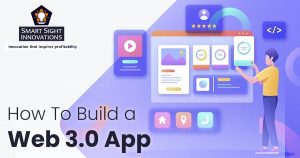 Web services allow computer-to-computer interactions over the internet. With Web 3.0, consumers are now able to govern their data, process queries similar to humans through artificial intelligence (AI) and store data across a distributed network. Web 3.0 is an internet version built on public blockchains, a mechanism for maintaining records best known for allowing cryptocurrency exchanges. Several blockchain domain name service (DNS) platforms have appeared including Handshake, Unstoppable Domains, Decentraweb and Ethereum Name Service (ENS).
Web services allow computer-to-computer interactions over the internet. With Web 3.0, consumers are now able to govern their data, process queries similar to humans through artificial intelligence (AI) and store data across a distributed network. Web 3.0 is an internet version built on public blockchains, a mechanism for maintaining records best known for allowing cryptocurrency exchanges. Several blockchain domain name service (DNS) platforms have appeared including Handshake, Unstoppable Domains, Decentraweb and Ethereum Name Service (ENS).
Web 3.0 is interesting because it is decentralized, which means instead of customers using services that are mediated by businesses like Google or Facebook, users themselves own and control segments of the internet, essentially preserving user privacy. It does not require authorizations from any authority and does not require any administrator for digital transactions that take place between two or more entities. Website and app owners are looking for ways to incorporate decentralization into their business models to stay technologically relevant.
Building a Web 3.0 App
For those who want to build a Web 3.0 app, buying a Web 3.0 domain is the first step. Web 3.0 domains are “digital certificates” that serve several purposes and are publicly transparent on the blockchain in the form of NFTs. In addition to offering an easy way to transfer and receive money, Web 3.0 domains serve as a gateway to decentralized websites and applications. You can build a Web 3.0 website or app using the steps below.
1. Initial Stage
It is crucial to understand what you want to develop before starting a Web 3.0 application
or website. In this stage, you need to identify the vision, analyze the market and know your target audience and competitors. This will help you to put your idea into practice effortlessly, decide on your requirements and connect with specialized consultants like business analysts, marketers, programmers, designers and financiers. This enables you to understand the design and operational requirements, prepare a budget estimate, and shortlist a preferred technological platform. Simply put, the clearer your idea is the simpler it will be to implement and develop it.
2. Outlining the Tasks
At this stage of development, you decide what features need to be added and how to
enter the market. Outlining the tasks can be described more clearly by using cryptocurrency as an example.
- You need to first register your crypto address or retrieve the earlier one.
- Then you enable receiving and transferring digital assets, allowing users to buy and sell cryptocurrency within their application.
- You then link a banking account by connecting payment systems like PayPal, Google Pay and Apple Pay that enhance user experience.
- Introducing push notifications is an essential function as the users will receive messages about approved transactions, system updates, balance adjustments and other relevant information.
- Lastly and most important is security wherein you can provide fingerprint and face authentication or time-to-live (TTL). TTL indicates how long the information should stay on a computer or network before being discarded.
3. Structural Growth
Establishing the application’s structure is the next phase in building a Web 3.0 app. The focus is on the user interface and its movements. It is believed that a website or application’s user interface will be more appealing and that the user experience will be greater if the path is simple. Usually, UX/UI designers build this structure and if they need any assistance or input, they can be joined by a programmer or an expert. For instance, when creating crypto apps it is necessary to involve professionals to comply with laws and for the distribution of data.
4. Designing UX/UI
Designers produce a user interface for your app or website based on the information gathered in the earlier stages and the structural growth. The user interface should have a neat, clear and appealing appearance and adhere to both current trends and industry standards. For example; for an iOS app you need to comply with the Human Interface Guidelines and for Android, you need to focus on high-quality apps.
5. Creating a Code for the Application
Once the user interface is designed, the next step is to apply codes. Developers need to select a technological stack that best fits the app. Smart contracts, SQL databases, DevOps, NoSQL databases and cache are some technological stacks for backend Web 3.0. For the frontend Web 3.0, some options are Java, Kotlin, Android Studio or Xcode for iOS.
6. Product Performance
The codes are then tested by the specialists, wherein they evaluate and check for flaws and check whether the requirements are met. They also test the performance and usability of these codes.
7. Implementing and Launching the Product
After testing, evaluating and developing the codes it is then launched into the company’s local servers or the cloud. The application is then added to the App store, Google Play and the Amazon App Store.
8. Product Assistance
Finally, you coach the team on how to use the product and form a support team. When building a support team you need to decide upon the parameters of the service quality to be offered and your entire team must be involved in developing it.
Now that you have built your Web 3.0 app or website, find out how to use your Web 3.0 and how your business may benefit from this technology to gain a competitive advantage.











